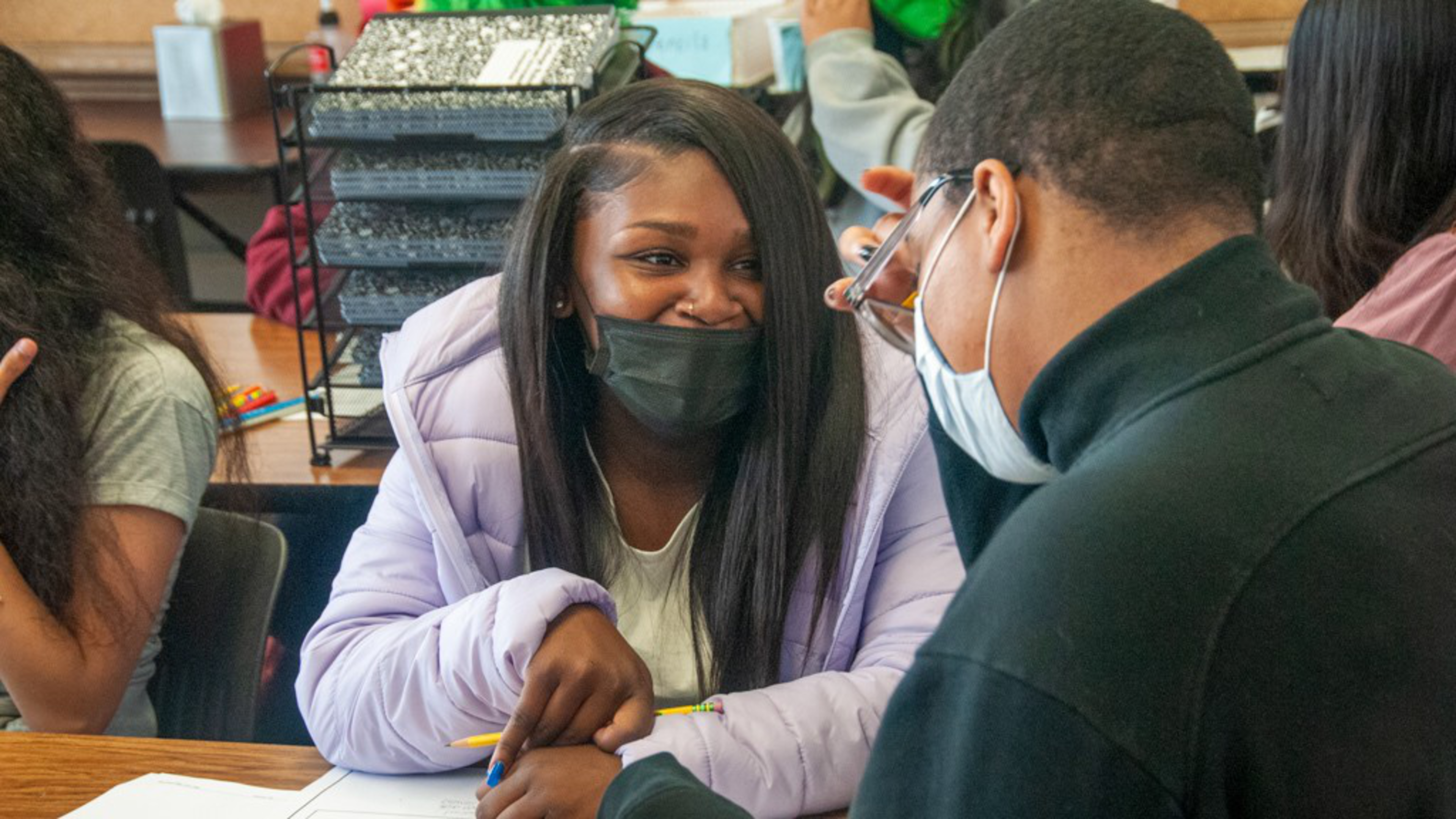The lifting of California’s mask mandate garnered mixed reactions. Locally, many parents rejoiced before turning to anger upon learning that San Francisco Unified School District planned to keep kids in masks through the end of the school year.
But not everyone is upset by the district’s course of action.
Vriana Kempster, an SFUSD educator of 20 years on special assignment, has adapted her family’s lifestyle around protecting her four-year-old with cystic fibrosis from the coronavirus. She described January, with half the staff and students often out sick or absent due to an exposure, as “scary.” Everyone wearing masks greatly improved her comfort level working with what can be five daily classes of 20 to 30 kids.
“I can’t just walk out of the room if I don’t feel safe,” Kempster said. As such, she wants to see more concrete contingency plans and safety measures put in place before the masks come off for good.
Kempster said masks are a simple way to keep everyone safe—or at least feeling safe—until all public school buildings have better ventilation, antiviral medication is more readily available, and children under five years old can get vaccinated.
But others aren’t so sure, and opinions within the medical community are mixed. A report published Feb. 28 in The Scientist (opens in new tab) declared “most experts agree that masks slow school spread of SARS-CoV-2.”
However, Dr. Jeanne Noble, director of Covid response with UCSF’s Emergency Department, and one of the authors of a contentious open letter calling for an end to mask mandates in schools, described the district’s action to keep requiring masks indoors “tragic news for the children” who need normalcy.
Even as SFUSD decided it will keep masking in place through this school year, the San Francisco Department of Public Health announced it will align with the new state guidelines (opens in new tab) to not require but still strongly recommend masks starting March 11—making SFUSD somewhat of an outlier within the city itself.
Still, the district is not alone in its cautious approach. For the time being, SFUSD is joined by school districts (opens in new tab) in Oakland, San Mateo, South San Francisco and Fremont in continuing to require masks indoors. School officials in San Ramon, Novato, San Jose and Palo Alto will no longer require masks indoors.
“It’s important to weigh pros and cons with a full detailed assessment,” said SFUSD teacher Daniel Owens. He’s in favor of ending the mandate, in part because he said masks make it hard to communicate with English learners. “It’s pretty illogical when adults are allowed to be maskless in much more crowded and much louder spaces like bars and restaurants, but schools continue to force kids to wear masks.”
Owens pointed to low transmission rates and high vaccination rates (opens in new tab). More than 90% of 12 to17 year olds and more than 69 percent of 5 to 11 year olds in San Francisco are fully vaccinated.
A poll by the Berkeley Institute of Governmental Studies and LA Times released last week (opens in new tab) found that 61% of parents approved of mask requirements in schools this year. The poll, conducted in early February, surveyed registered voters with school-aged parents; it found that 37% disapprove of making kids wear masks in schools and that the remainder of respondents had no opinion.
SFUSD parent Morgan Robinson waited eagerly for California’s mask mandate to end and is waiting for all the COVID protocols like asymptomatic testing to be lifted.
“Now that the kids are vaccinated I prefer them to be comfortable,” said Robinson, who was active in the school board recall campaign. “So many experts now are saying that now is a good time to take off the masks. I don’t see myself staying [in SFUSD] if protocols are so strict.”
At the same time, it could be the final nudge for weary educators to leave the district in the face of fatigue and budget uncertainty. SFUSD teacher Annie Phan transferred within the district to Rooftop School PK-8, where air purifiers came early and ventilation from windows is strong—unlike her last school The Academy at McAteer, which had classrooms with no windows or windows that could not be opened.
“I wouldn’t be surprised if I heard from people at other school sites that this was the last straw given their context,” Phan said. “I don’t personally find it reassuring to be like, ‘We’re back to normal. Case counts are down.”
If the mandate were lifted soon, Phan said she would continue wearing a mask for her own comfort and to model safety for her students who may still be nervous about coronavirus. Furthermore, she predicts mixed mask use would continue at her school. Though masks are no longer required outdoors, many students still wear them, she said.
Like Kempster, Phan says she is also looking for a long-term plan with a threshold to trigger mask mandates or other protocols. She would also like to see an overall shift in mask-wearing culture and believes public policy has a role to play in guiding society toward a place where facial coverings are seen as a protective measure against all kinds of airborne viruses.
“The general reaction I and my students have had is we kind of wish things were more proactive, more preemptive,” Phan said. “Policy is supposed to inform guidelines for how we inform a culture.”
